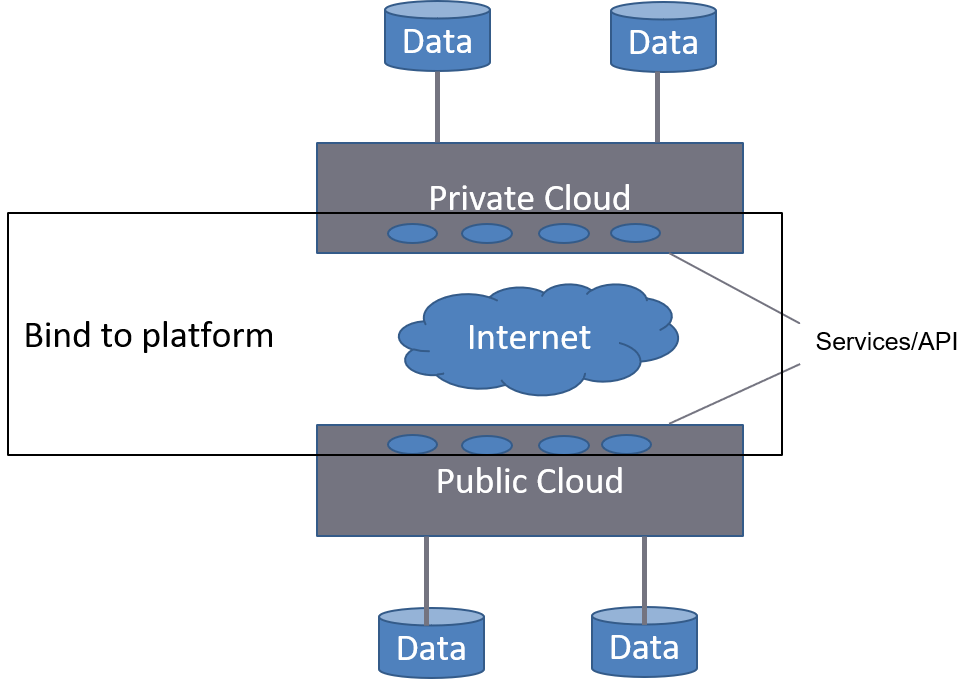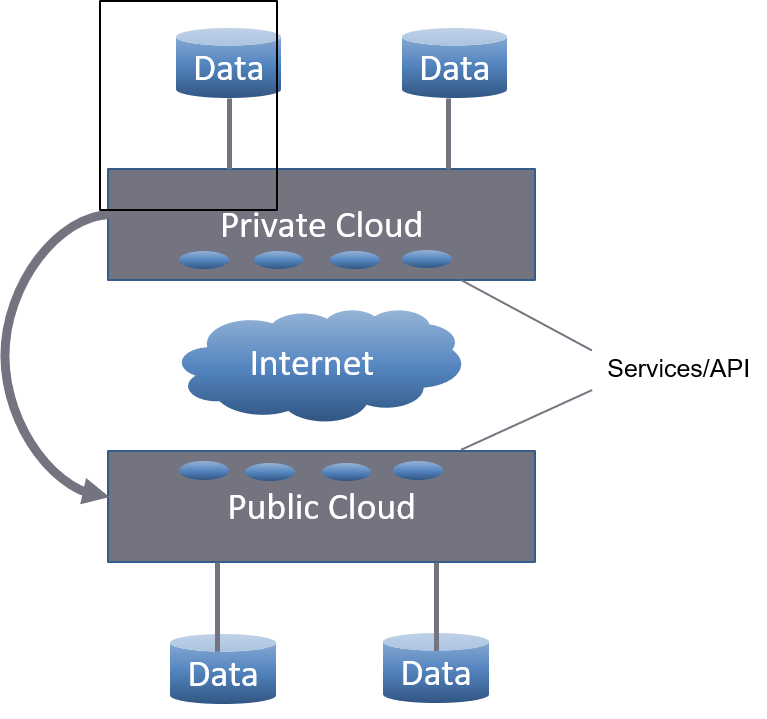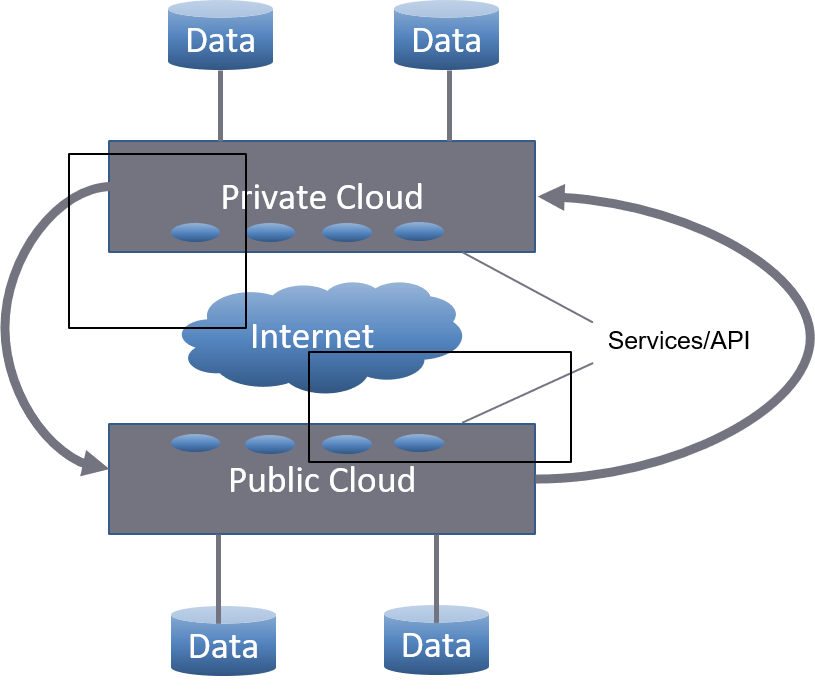A hybrid cloud is a combination of public and private cloud. It binds technology that allows data and applications to be shared between them. Hybrid Cloud architecture gives companies and business a good deal of flexibility in terms of agility, which in turn gives business the luxury to adjust based on the load that is required for running the company with utmost efficiency.
Advantages of Hybrid cloud Models
- Security and governance can be followed based on local data storage policies and laws.
- From an operational standpoint hybrid clouds can be more cost effective than dedicated private data centers.
- The rise of new management technologies, such as cloud management platforms (CMP) makes it possible to manage these complex environments using a single interface for provisioning and scaling.
- A fail-over mechanism can be created by keeping backups in the cloud, so that when the on-premise datacenters fails(due to less redundancy), the resources still continue to be deployed.
- Bandwidth of data that the customer enjoys can be increased with more redundant links.
- Since public cloud providers have datacenters around the world, and on-premise data centers are mostly a few in number. The latency in which the customers get data can be reduced using content delivery networks.
- A private cloud can be combined with public cloud, allowing business to take advantage of cloud bursting to free up more space and scale computing services to the public cloud when computing demand increases.
Types of Hybrid Cloud Deployments
Static Placement
 Static placement refers to the architectures where the location of workloads are tightly bound to private (on-premise) or public clouds. This means it is difficult or impossible to port from private to public cloud or from public to private cloud.
Features of Static placement
•Difficult or impossible to dynamically port or migrate.
•Little or no use of standards.
•Typically older platforms mixed with cloud platforms.
Static placement refers to the architectures where the location of workloads are tightly bound to private (on-premise) or public clouds. This means it is difficult or impossible to port from private to public cloud or from public to private cloud.
Features of Static placement
•Difficult or impossible to dynamically port or migrate.
•Little or no use of standards.
•Typically older platforms mixed with cloud platforms.
Assisted Replication
 Assisted replication model refers to architecture where some workloads can be replicated from private (on-premise) cloud to public clouds or from public to private clouds. Often at the API level (usually as Web services) and with new platforms that are code and service-compatible with emerging cloud platforms.
Features of Assisted Replication Model.
•Code port and/or interface compatibility.
•Some use of standards.
•Typically new platforms that are code/service compatible.
Assisted replication model refers to architecture where some workloads can be replicated from private (on-premise) cloud to public clouds or from public to private clouds. Often at the API level (usually as Web services) and with new platforms that are code and service-compatible with emerging cloud platforms.
Features of Assisted Replication Model.
•Code port and/or interface compatibility.
•Some use of standards.
•Typically new platforms that are code/service compatible.
Auto migration
 Auto migration architecture refers to the code or entire workloads moving between private and public cloud instances, usually through human intervention but sometimes through an automated process. This includes the automatic movement of code and/or virtual machines through well-defined interfaces and some use of standards.
Feature of Auto migration
•Auto code/virtual machine migration and/or interface compatibility.
•Some use of standards.
•Virtualization, code, and data levels.
Auto migration architecture refers to the code or entire workloads moving between private and public cloud instances, usually through human intervention but sometimes through an automated process. This includes the automatic movement of code and/or virtual machines through well-defined interfaces and some use of standards.
Feature of Auto migration
•Auto code/virtual machine migration and/or interface compatibility.
•Some use of standards.
•Virtualization, code, and data levels.
Dynamic Migration
 Dynamic migration refers to moving workload instances as if both private and public cloud instances existed in the same virtual operating system. Standards are used where possible. This is the functional objective of hybrid cloud computing, and the core promise made by the hybrid operating systems providers.
Features of Dynamic Migration
•Dynamic virtual machine migration within a single logical operating system.
•Logical and physical abstraction.
•Some use of standards.
•Hybrid cloud operating
Dynamic migration refers to moving workload instances as if both private and public cloud instances existed in the same virtual operating system. Standards are used where possible. This is the functional objective of hybrid cloud computing, and the core promise made by the hybrid operating systems providers.
Features of Dynamic Migration
•Dynamic virtual machine migration within a single logical operating system.
•Logical and physical abstraction.
•Some use of standards.
•Hybrid cloud operating

